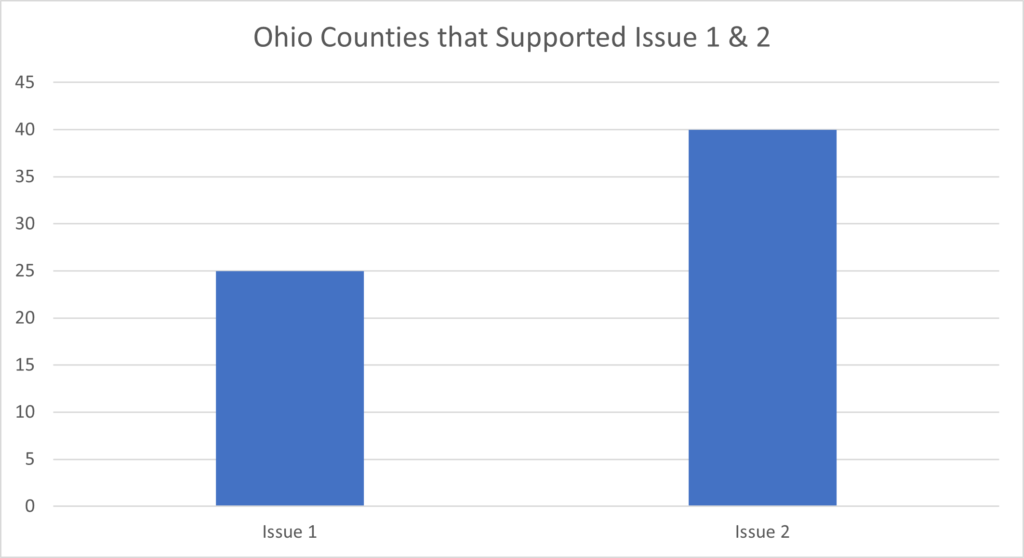Ohio’s Supermajority Republican General Assembly, Republican slate of statewide officeholders and an overwhelming Republican Congressional Delegation does not mean the state’s voters will always following a conservative patch. Ohio voters in the November 2023 election proved that perspective when they voted in support of an abortion rights amendment to the Ohio Constitution and a legislative initiative to permit the use of recreational marijuana.
Ohio voters by a 56-34% margin of support with 100% of the precincts reporting supported Issue 1 which was the abortion rights amendment to the Ohio Constitution. Ohio joins California, Kentucky, Michigan, Montana, Vermont, and Kansas as states that have voted on abortion rights proposals since the U.S. Supreme Court reversed its landmark 1973 Roe v. Wade ruling. Issue 1 was an amendment to the Ohio Constitution which can only truly be impacted by another constitutional amendment. Opponents of Issue 1 are making noises that a repeal of this constitutional amendment is a route they are seriously considering for the March 2024 Primary Election. Ohio voters by almost an equal margin of 56%-44% supported a legislative initiative, Issue 2 to permit recreational use of marijuana. The Ohio General Assembly had enacted medical marijuana legislation, but the marijuana industry crafted and pushed for Issue 2 to expand their market in the Buckeye State. Unlike Issue 1, Issue 2 is a legislative initiative. The Ohio General Assembly can impact how Issue 2 is implemented and could even repeal the initiative—although with 56% support for the initiative that is highly unlikely. Arguments the public health and business community made about the dangers of additional drug use simply did not connect with the voters and the resources to oppose Issue 2 were not substantial as the likelihood of the issue passing were strong from the state.

Statehouse Republicans should be paying attention not just how many counties had a majority of their voters support Issue 1 and Issue 2 but where these counties were. No surprise that large urban counties that have shifted to the Democrats over the last several years as they supported Issue 1 and 2. Issue 1 won overwhelmingly in Ohio’s largest cities − passing with nearly 73% of the vote in Franklin County, 74% in Cuyahoga County and 65% in Hamilton County, according to unofficial results − but it also won in suburban counties like Delaware (59% of the vote), Lake (60%) and Lorain (62.4%). However, counties in rural Southeast Ohio supported Issue 2 while exurban Ohio counties and longtime, union friendly counties in Northern Ohio supported both Issue 1 and 2. These “Republican” counties in reality may not be the traditional conservative counties on social issues that Republicans leaders had hoped they would be. It is also interesting that the recreational marijuana legislative initiative was supported by more counties than the abortion amendment but the margin of victory was the same statewide. This illustrates both ballot issues has broad voter support but the abortion issues carried substantially more intensity of support among its proponents than the recreational marijuana issue. The voters have spoken but no doubt the fight on both policy issues has not stopped. Issue 2 will be a major topic for the Ohio General Assembly and Issue 1 will result in litigation for years to come as opponents now shift their fights to the courtroom and opponents ponder a repeal ballot issue.